Abstract
We have shown that peripheral blood monocytes from patients with sarcoidosis release reduced amounts of interleukin-1 (IL-1) when compared with normals. In part, this defect explains the relative in vitro unresponsiveness of T lymphocytes from patients with sarcoidosis as measured by mitogen- or antigen-induced lymphocyte transformation. The addition of supernatants containing pre-formed IL-1 partially restored this defect. This enhancement was found to be additive to the previously described effect of indomethacin, an inhibitor of prostaglandin synthesis. Thus, it would appear that the activated peripheral blood monocytes found in sarcoidosis not only cause reduced lymphocyte proliferation by acting as suppressor cells but are also unable to act as accessory cells in producing IL-1.
Full text
PDF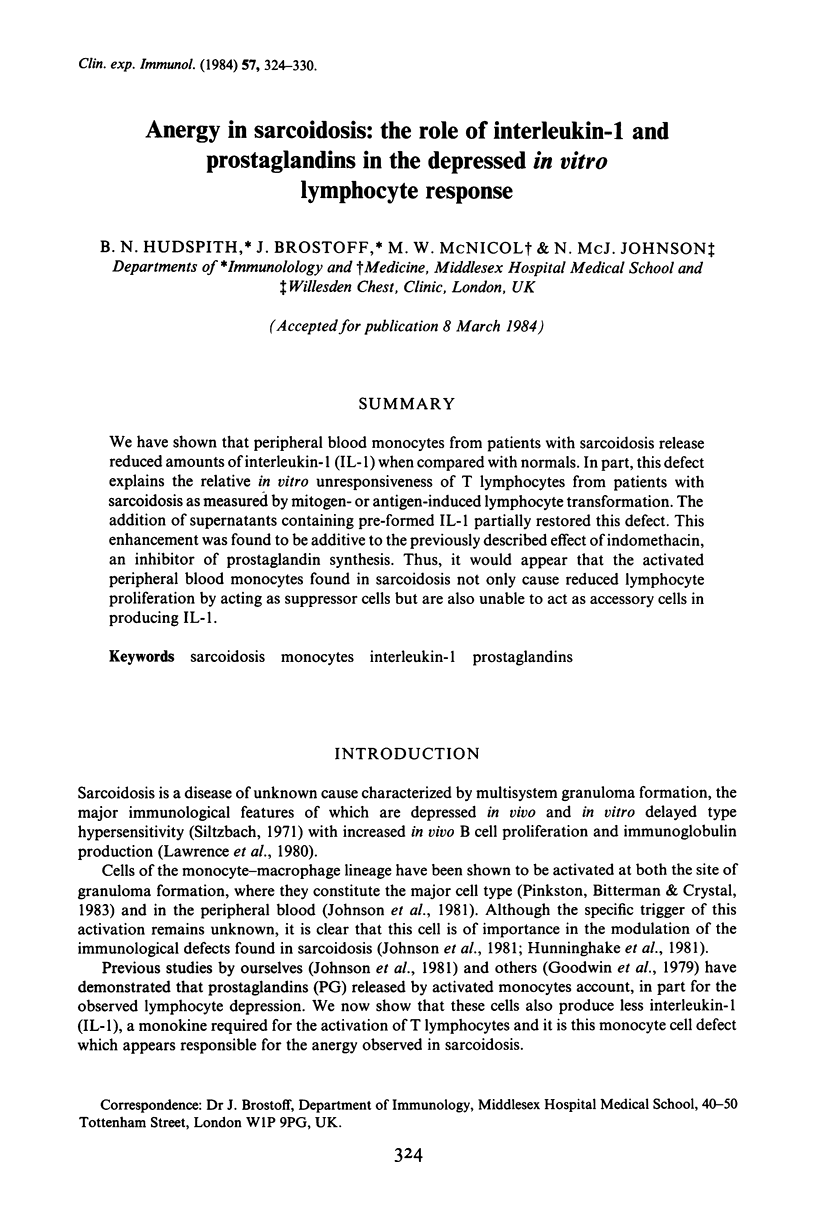
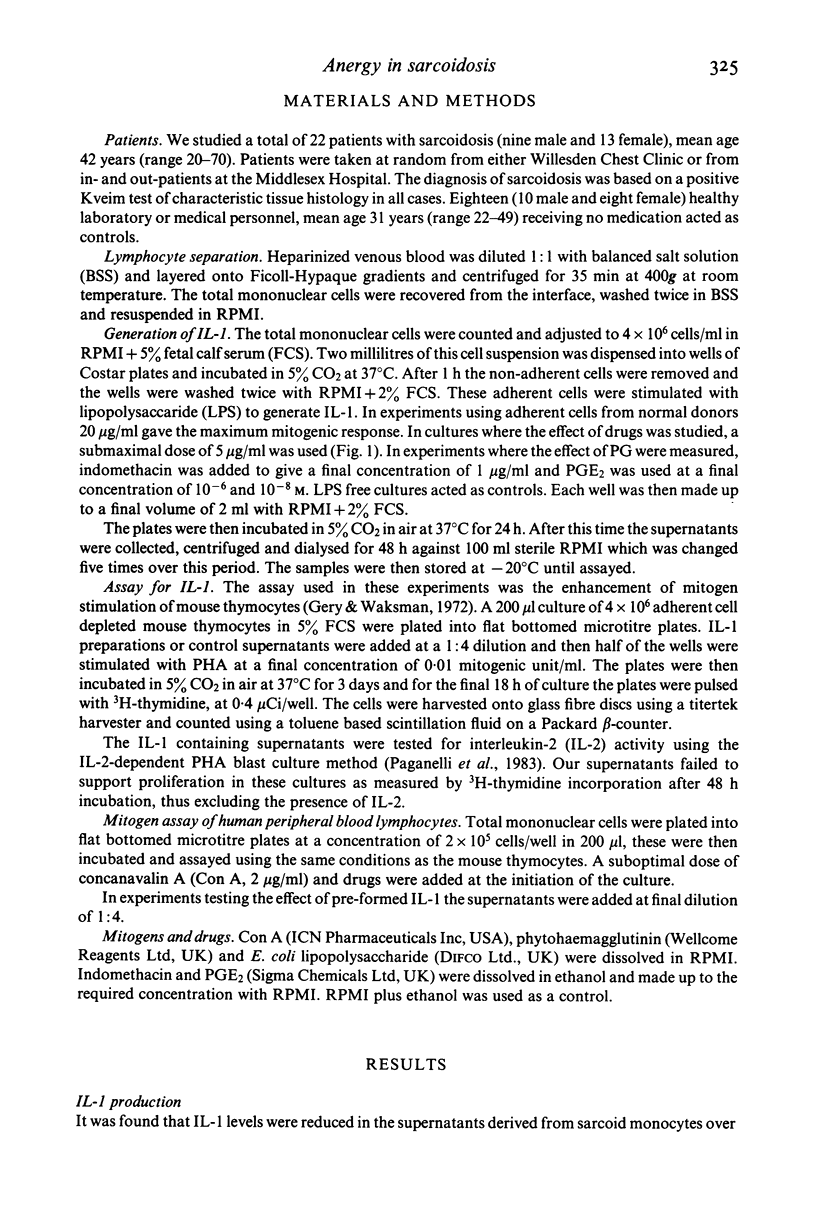
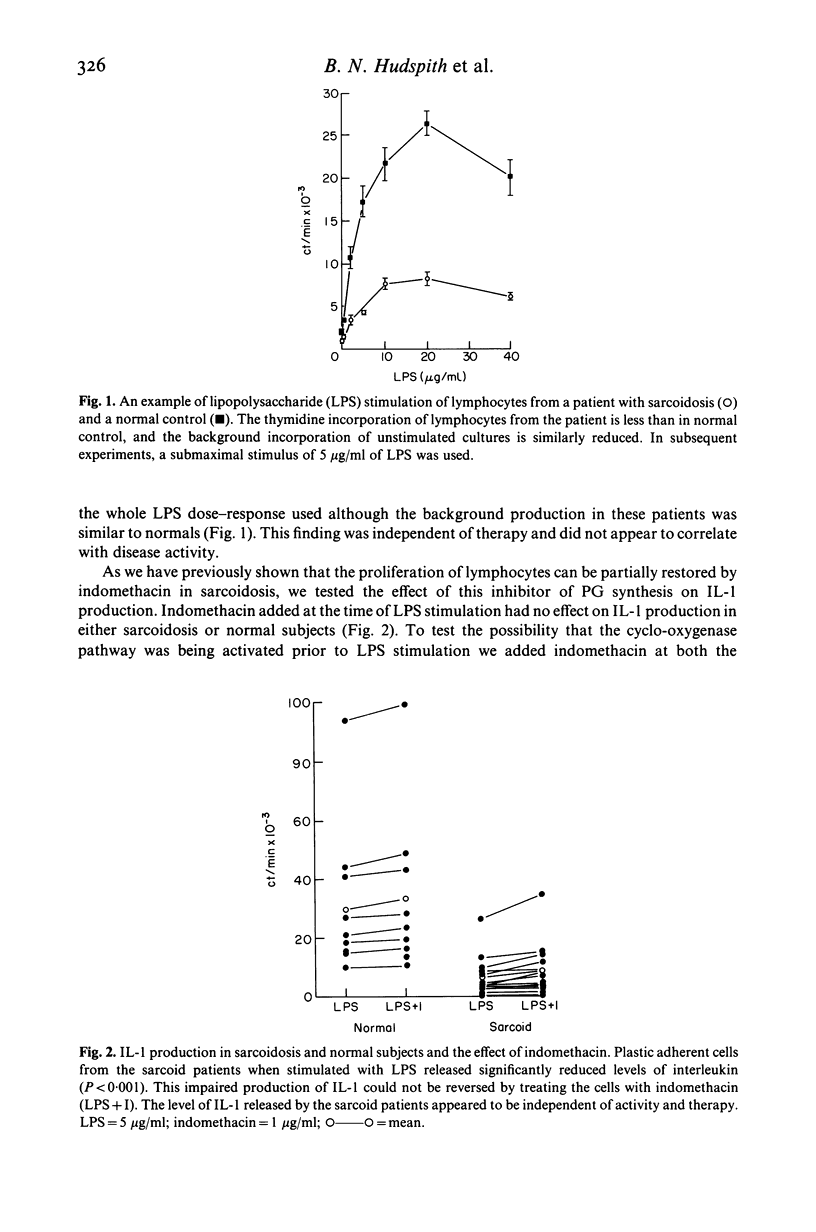
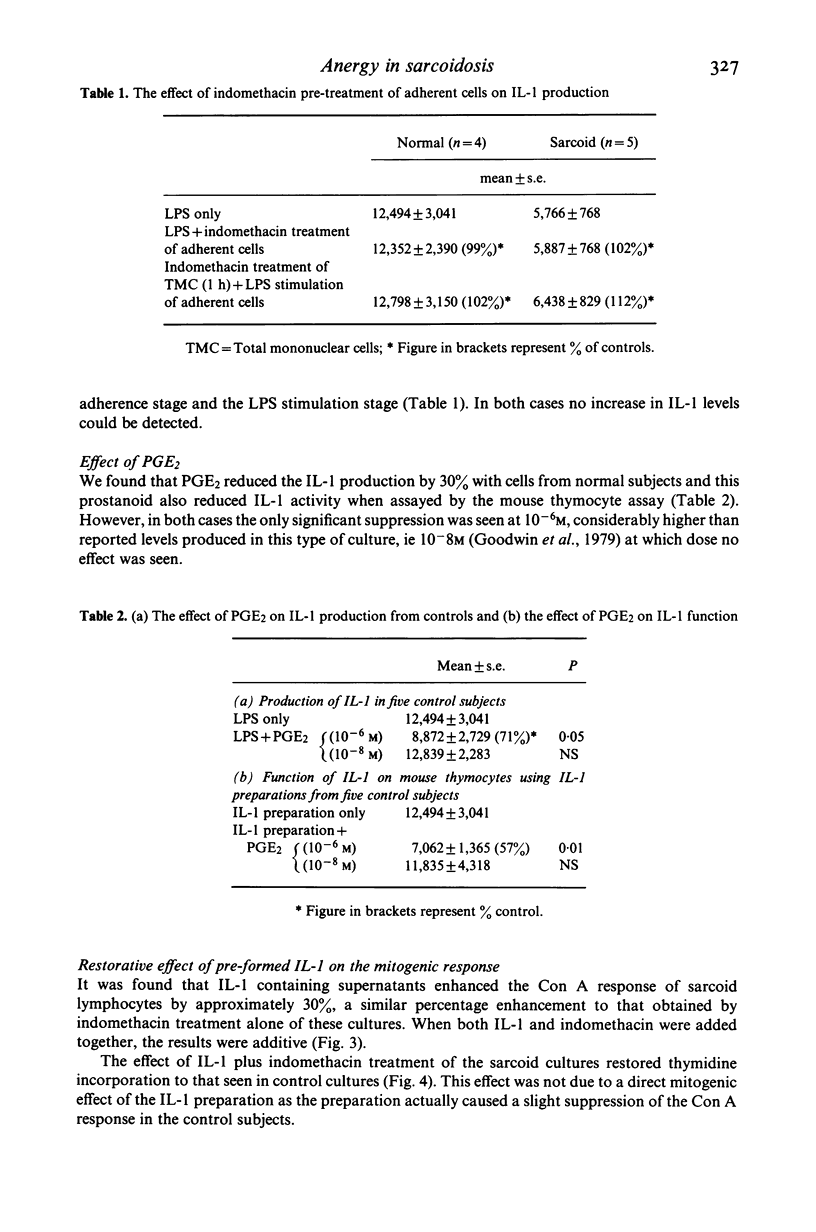
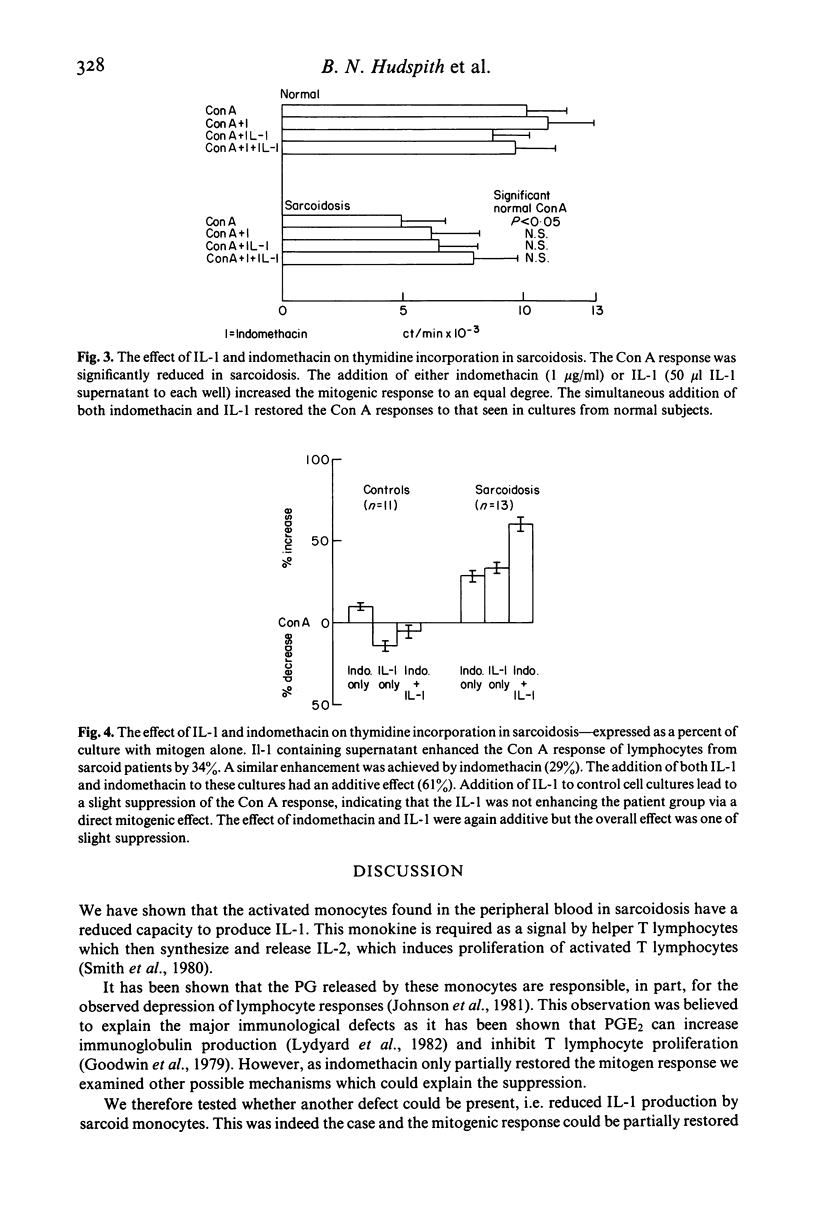
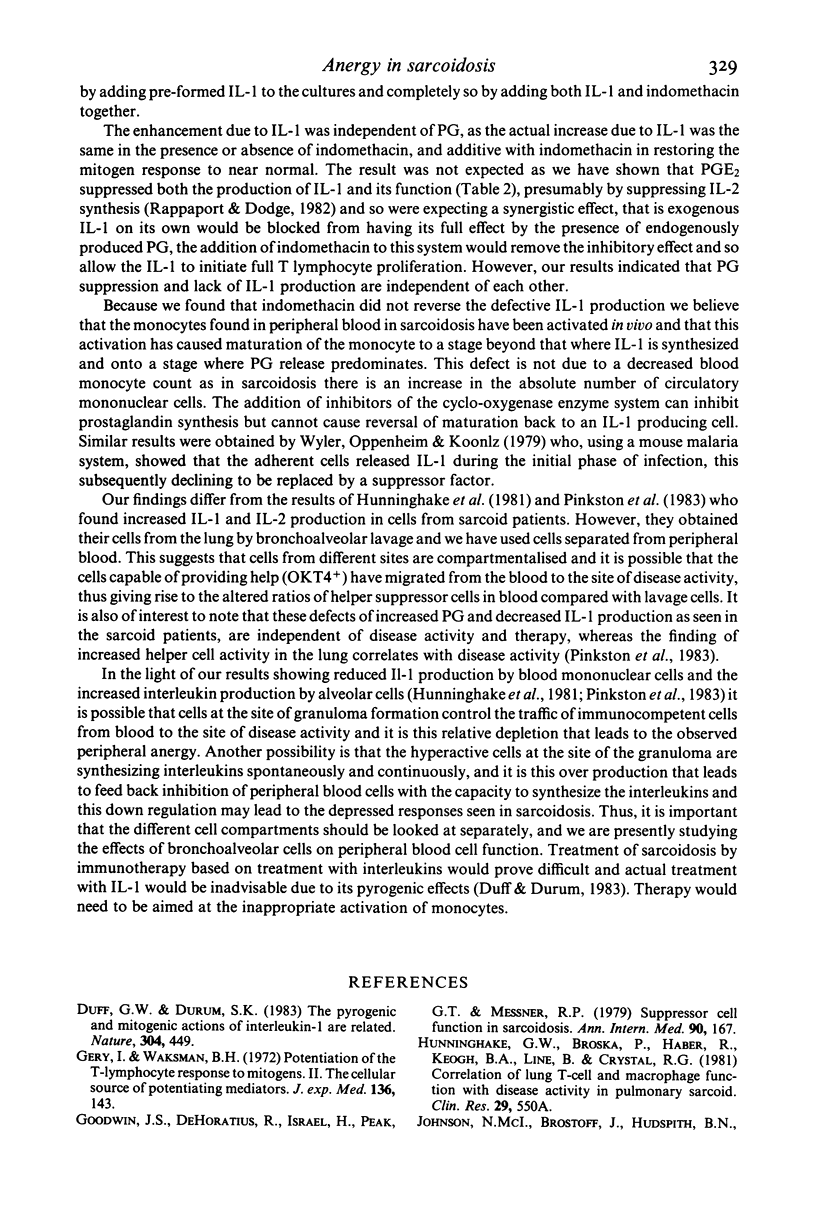
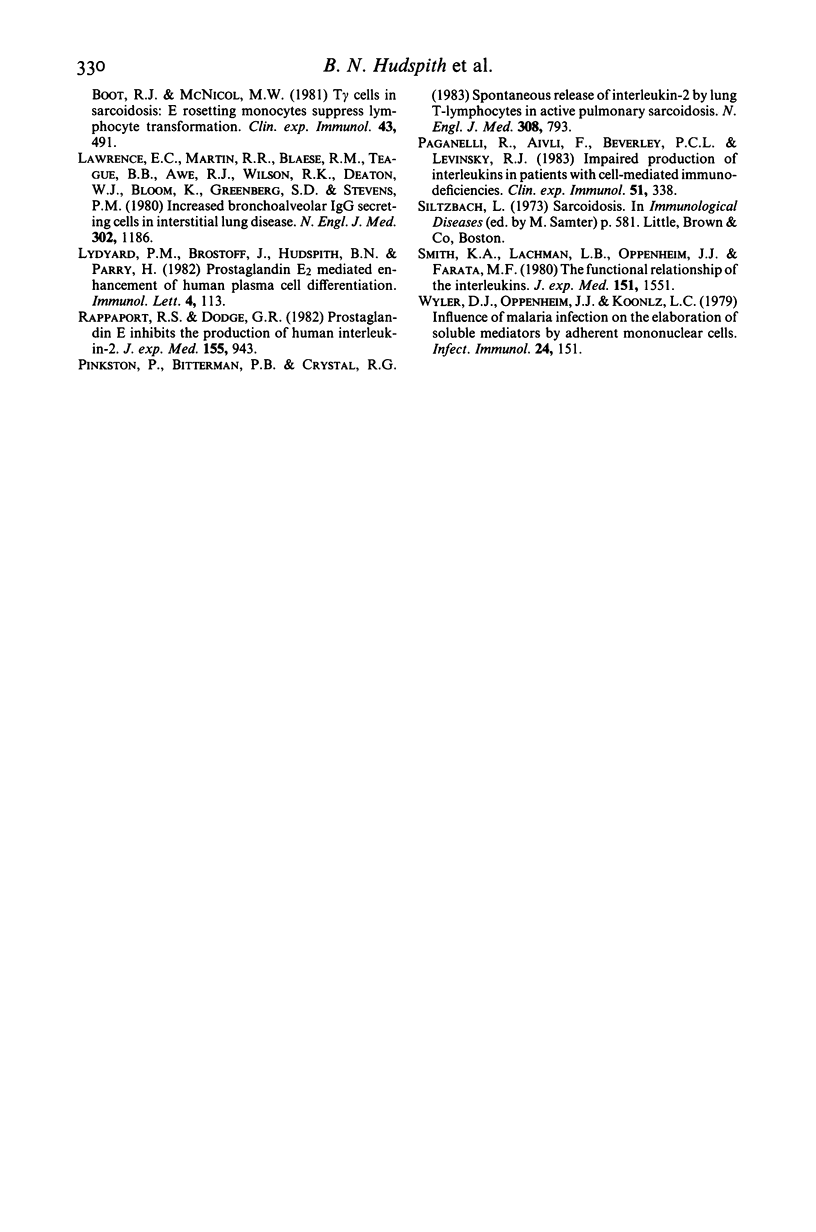
Selected References
These references are in PubMed. This may not be the complete list of references from this article.
- Duff G. W., Durum S. K. The pyrogenic and mitogenic actions of interleukin-1 are related. Nature. 1983 Aug 4;304(5925):449–451. doi: 10.1038/304449a0. [DOI] [PubMed] [Google Scholar]
- Gery I., Waksman B. H. Potentiation of the T-lymphocyte response to mitogens. II. The cellular source of potentiating mediator(s). J Exp Med. 1972 Jul 1;136(1):143–155. doi: 10.1084/jem.136.1.143. [DOI] [PMC free article] [PubMed] [Google Scholar]
- Johnson N. M., Brostoff J., Hudspith B. N., Boot J. R., McNicol M. W. T gamma cells in sarcoidosis: E rosetting monocytes suppress lymphocyte transformation. Clin Exp Immunol. 1981 Mar;43(3):491–496. [PMC free article] [PubMed] [Google Scholar]
- Lawrence E. C., Martin R. R., Blaese R. M., Teague R. B., Awe R. J., Wilson R. K., Deaton W. J., Bloom K., Greenberg S. D., Stevens P. M. Increased bronchoalveolar IgG-secreting cells in interstitial lung diseases. N Engl J Med. 1980 May 22;302(21):1186–1188. doi: 10.1056/NEJM198005223022106. [DOI] [PubMed] [Google Scholar]
- Lydyard P. M., Brostoff J., Hudspith B. N., Parry H. Prostaglandin E2-mediated enhancement of human plasma cell differentiation. Immunol Lett. 1982 Mar;4(3):113–116. doi: 10.1016/0165-2478(82)90020-7. [DOI] [PubMed] [Google Scholar]
- Paganelli R., Aiuti F., Beverley P. C., Levinsky R. J. Impaired production of interleukins in patients with cell-mediated immunodeficiencies. Clin Exp Immunol. 1983 Feb;51(2):338–344. [PMC free article] [PubMed] [Google Scholar]
- Pinkston P., Bitterman P. B., Crystal R. G. Spontaneous release of interleukin-2 by lung T lymphocytes in active pulmonary sarcoidosis. N Engl J Med. 1983 Apr 7;308(14):793–800. doi: 10.1056/NEJM198304073081401. [DOI] [PubMed] [Google Scholar]
- Rappaport R. S., Dodge G. R. Prostaglandin E inhibits the production of human interleukin 2. J Exp Med. 1982 Mar 1;155(3):943–948. doi: 10.1084/jem.155.3.943. [DOI] [PMC free article] [PubMed] [Google Scholar]
- Smith K. A., Lachman L. B., Oppenheim J. J., Favata M. F. The functional relationship of the interleukins. J Exp Med. 1980 Jun 1;151(6):1551–1556. doi: 10.1084/jem.151.6.1551. [DOI] [PMC free article] [PubMed] [Google Scholar]
- Wyler D. J., Oppenheim J. J., Koontz L. C. Influence of malaria infection on the elaboration of soluble mediators by adherent mononuclear cells. Infect Immun. 1979 Apr;24(1):151–159. doi: 10.1128/iai.24.1.151-159.1979. [DOI] [PMC free article] [PubMed] [Google Scholar]


